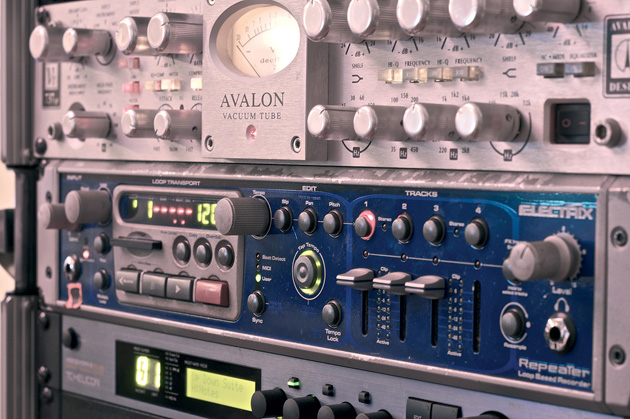In the first part of this guide we looked at how to set up a ‘dead’ sounding space in your studio and discussed microphone choice. Here, in part two, we will look at how you capture a great vocal performance.
The Role Of The Producer
The role of the producer has changed dramatically over the last few years. Whereas now, huge numbers of us sit alone in home studios, creating music with little or no input from others, once a producer was the hub of a busy studio environment – the glue that held a recording session together. The ability to make objective creative decisions was obviously a fundamental part of the producers remit, but an ability to effectively man-manage bands and artists was just as important. In fact, many producers would say, that it is more important. Here is an excerpt from an interview with producer Steve Levine (Beach Boys, Culture Club, Gary Moore) from Howard Massey’s excellent book ‘Behind The Glass’:
“Howard Massey: A producer is a bit like an orchestra conductor in that you need to know how to do many different things. What’s the most important skill to master
Steve Levine: Being a diplomat and having a good working relationship with artists. That will rise above anything else:
HM: That’s more important than having great ears or strong musical sensibilities?
SL: Absolutely. When I was an engineer, I worked with lots of producers who knew absolutely nothing about making a record in the normal sense. They would spend their time taking the artist to lunch, doing those sort of things. But invariably they got good vocal performances because the artist felt so comfortable around them.“
As soon, as you bring a vocalist into your studio, man-management becomes incredibly important if you are to capture a great vocal performance.
Getting The Most Out Of A Vocalist
Ultimately, you are going to get more from a singer if they are comfortable in their surroundings. Simple things can really help here. Maybe get them over to visit your studio for an evening before you ever try to record anything; I will almost always do this. It gives you an opportunity to get to know them a little bit first. You will get a feeling for their character, and hopefully discover some common ground or mutual interests. All this is very helpful when you are talking to them during the session – trying to make them feel at ease. It also helps that when your singer comes in again to record, they are walking into a familiar situation; they have already had a look round your studio and they know what to expect.

If your singer is inexperienced in a studio environment, it can often be worth arranging some practise sessions with them before you actually record the final vocal. For an inexperienced singer, a recording session can be quite a high-pressure experience. If they are well rehearsed you are much more likely to get a good performance on the day. Use practise sessions to really go through the song line by line. What exactly are you trying to say with each line? Is the way the line is being delivered really selling the story that you are trying to tell with the lyrics?
Of course, creating this narrative with lyrics is equally important if you are working with a very experienced singer. In another interview from ‘Behind The Glass’, Massey discusses vocal performance with Mike Clink (Guns ‘n’ Roses, Whitesnake, Megadeth):
“Howard Massey: What psychological gambits have you come up with for eliciting the best performance from a singer?
Mike Clink: The number one pointer I can give is to visualize what you are trying to say. When I’m sitting in the control room during vocal takes, I always have the lyrics in front of me. If I close my eyes, I’m trying to see in my mind if the singer is telling me the same story as what he’s written down lyrically. I f you can do that, that’s the biggest hurdle to overcome. A vocal can’t just lay there in a linear manner; it’s got to take you up and down, depending on what the lyrics are trying to say. If it’s sad, you want it to bring tears to your eyes, to make you a little misty. If it’s “fuck you,” you want to hear that energy and emotion. If you can do that – if you can look at your lyrics and listen to your vocals and say, “it’s telling the story, and it’s taking me on a journey” – then you’ve accomplished a great performance.”
Finally, think about how you can get some character into your vocalist’s performance. Even is you are just using a session singer, you don’t want them to sound like a session singer. If a vocal performance contains a lot of character, it will elevate the record. Invite your singer to express themselves – even to make small lyrical or melodic adjustments if it means that they are more comfortable singing the line. Try and work out what it is that makes them unique as a performer, and try to pull that out of them. There are already too many bland vocal performances out there – don’t add to them! A good recent example of mainstream EDM that still manages to incorporate an interesting, chracterful vocal performance is Avicii’s ‘Wake Me Up’:
Next Steps:
So now that you have captured and excellent vocal performance, what do you do with it? In part three of this series, we will look at vocal processing techniques and effects chains that you can use to create a really top level vocal mix.




